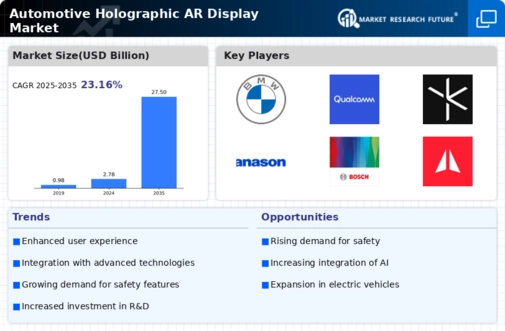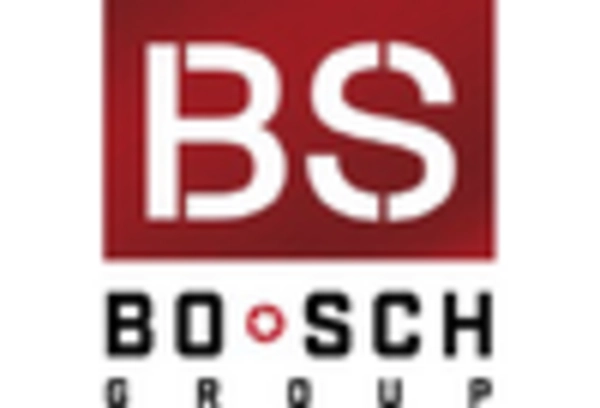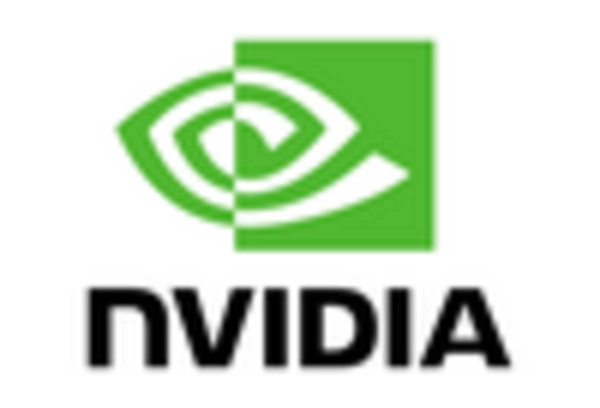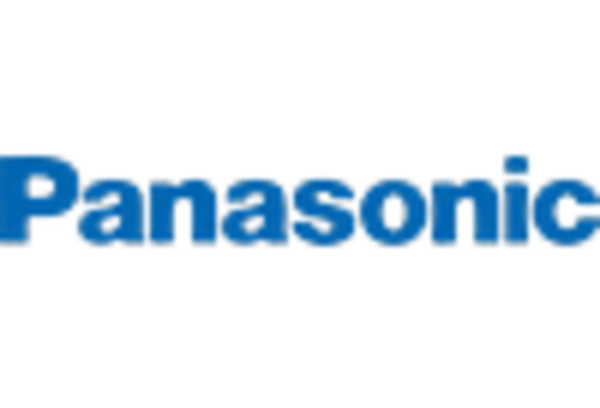Growing Interest in Autonomous Vehicles
The growing interest in autonomous vehicles is significantly impacting the Automotive Holographic AR Display Market. As the automotive sector shifts towards automation, the need for advanced display technologies becomes more pronounced. Holographic displays can provide essential information to passengers in autonomous vehicles, such as route details and system status, enhancing the overall user experience. Furthermore, these displays can serve as a communication interface between the vehicle and its occupants, making the journey more engaging. Market analysts predict that the rise of autonomous vehicles will create substantial opportunities for holographic AR displays, potentially leading to a market expansion that could exceed current projections. This trend underscores the importance of integrating innovative display technologies in the future of transportation.
Rising Demand for Enhanced Safety Features
The Automotive Holographic AR Display Market is experiencing a notable surge in demand for enhanced safety features in vehicles. As consumers become increasingly aware of road safety, automakers are integrating advanced technologies to mitigate accidents. Holographic displays provide real-time information, such as navigation prompts and hazard alerts, directly in the driver's line of sight. This technology not only enhances situational awareness but also reduces distractions, which is crucial for safe driving. According to recent data, the incorporation of AR displays in vehicles could potentially reduce accident rates by up to 30%. This growing emphasis on safety is likely to drive the Automotive Holographic AR Display Market forward, as manufacturers seek to meet consumer expectations and regulatory standards.
Consumer Preference for Interactive Features
Consumer preference for interactive features is a driving force in the Automotive Holographic AR Display Market. As technology becomes more integrated into daily life, consumers increasingly expect their vehicles to offer interactive and engaging experiences. Holographic displays facilitate this by allowing drivers to interact with navigation systems, entertainment options, and vehicle diagnostics through intuitive gestures and voice commands. This level of interactivity not only enhances user satisfaction but also fosters a deeper connection between the driver and the vehicle. Market Research Future suggests that vehicles equipped with interactive AR displays are perceived as more innovative, which can influence purchasing decisions. Consequently, this trend is likely to stimulate demand for holographic displays in the automotive sector.
Regulatory Support for Advanced Technologies
Regulatory support for advanced technologies is playing a pivotal role in shaping the Automotive Holographic AR Display Market. Governments worldwide are increasingly recognizing the potential of AR technologies to enhance road safety and improve driving experiences. As a result, there is a growing trend towards establishing regulations that encourage the adoption of such technologies in vehicles. For instance, some regions are offering incentives for manufacturers that integrate advanced safety features, including holographic displays. This regulatory environment not only fosters innovation but also creates a favorable market landscape for the deployment of AR technologies. As regulations evolve, the Automotive Holographic AR Display Market is likely to benefit from increased investment and development in this area.
Technological Advancements in Display Technologies
Technological advancements in display technologies are significantly influencing the Automotive Holographic AR Display Market. Innovations in optics, sensors, and processing power have enabled the development of more sophisticated holographic displays that offer improved clarity and functionality. For instance, the introduction of lightweight materials and energy-efficient components has made it feasible to integrate these displays into a wider range of vehicles. Market data indicates that the AR display segment is projected to grow at a compound annual growth rate of over 25% in the coming years. This rapid evolution in technology not only enhances the user experience but also positions holographic displays as a competitive advantage for automakers, thereby propelling the market's growth.


















Leave a Comment